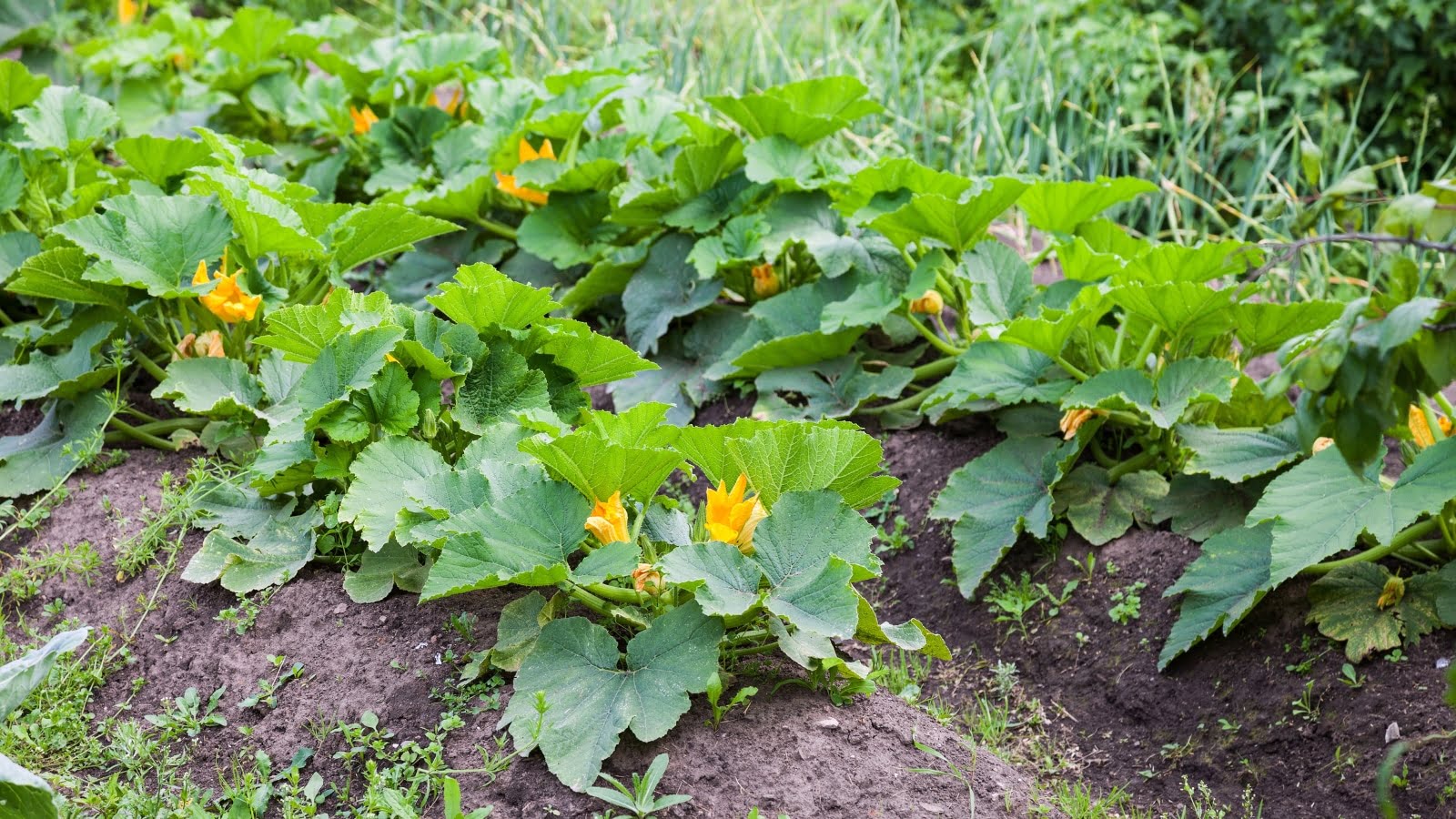You’re eager to have a flourishing zucchini garden this year, and rightly so! In this article, you’ll discover the key to achieving maximum growth for your zucchini plants: proper spacing. Wondering how far apart you should place your zucchini plants? We’ll unveil the ideal spacing that will allow each plant to thrive and yield an abundance of delicious zucchinis. Prepare to learn the secrets to a successful zucchini garden!
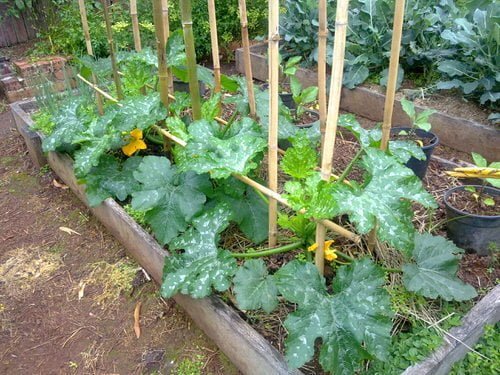
Determining the Right Spacing for Zucchini Plants
Understanding the Growth Habit of Zucchini Plants
Before determining the proper spacing for zucchini plants, it’s important to understand their growth habit. Zucchini plants are robust and tend to spread out as they grow. They have large, broad leaves and can develop into vigorous vines. This knowledge will help us in determining the appropriate spacing requirements for these plants.
Considering the Specific Variety of Zucchini
Different varieties of zucchini may have varying growth patterns and sizes. Some varieties produce compact bushes, while others have sprawling vines. It is essential to consider the specific variety you are planting to determine the appropriate spacing. By researching the particular attributes of the chosen variety, you can ensure that you are giving your plants the correct amount of space to thrive.
Climate and Environmental Factors
The climate and environmental conditions in your area can also influence the spacing requirements for zucchini plants. In regions with milder climates and longer growing seasons, zucchini plants tend to grow more vigorously and may require extra space. On the other hand, if you are gardening in a limited space or have a shorter growing season, you may need to make adjustments to the spacing guidelines to accommodate your unique conditions.
The Importance of Proper Spacing
Proper spacing is crucial for the optimal growth and overall health of your zucchini plants. Inadequate spacing can lead to several issues such as overcrowding, poor air circulation, increased susceptibility to diseases, and reduced yields. By providing adequate space between plants, you can ensure that each plant receives the necessary nutrients, sunlight, and airflow, resulting in healthier and more productive zucchinis.
Spacing Guidelines for Zucchini Plants
General Spacing Recommendations
A general guideline for spacing zucchini plants is to leave approximately 2-3 feet of space between each plant. This distance ensures that the plants have enough room to grow and prevents overcrowding. If you are planting multiple rows, maintain a spacing of 3-4 feet between the rows to allow for easy access and maintenance.
Vertical Spacing for Zucchini Plants
Zucchini plants have a tendency to grow horizontally, but providing adequate vertical space is also important. Allow a minimum clearance of 6-8 feet from the ground to ensure that the plants have enough headroom. This vertical spacing allows the plants to spread out without obstructing each other or neighboring plants, facilitating better air circulation and reducing the risk of disease.
Horizontal Spacing for Zucchini Plants
When determining horizontal spacing for zucchini plants, consider the spread of their leaves and vines. Allow for approximately 3-4 feet of space between each plant in a row. This spacing accounts for the lateral growth of the plants, ensuring that the leaves and vines do not become overcrowded. Sufficient horizontal spacing promotes healthy growth and facilitates easy access for maintenance tasks such as watering, pruning, and harvesting.
Intercropping Zucchini with Other Plants
Intercropping zucchini with compatible plants can be beneficial in utilizing space efficiently and promoting plant health. Consider planting zucchini alongside plants that have complementary growth habits or occupy different layers of the garden. For example, tall and upright plants, such as corn or sunflowers, can provide shade and support for zucchini plants, while low-growing plants like lettuce or radishes can cover the soil and minimize weed growth. Intercropping allows for effective space utilization and can enhance overall garden productivity.
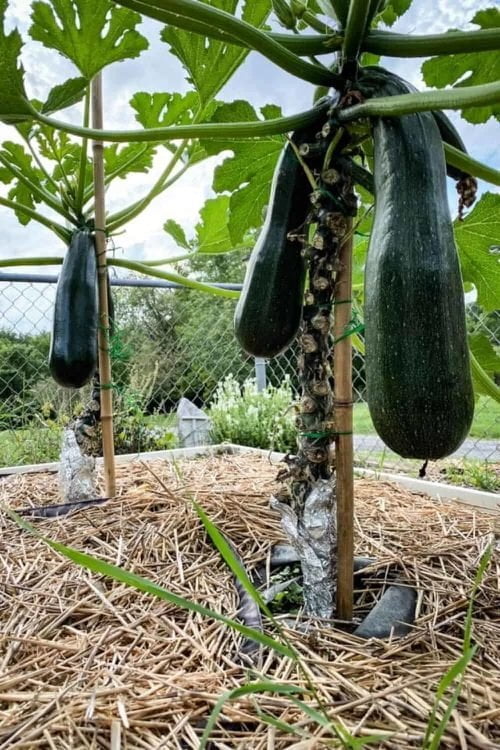
Preparing the Soil for Zucchini Planting
Soil Type and Composition
Zucchini plants thrive in well-draining soil with good fertility. Prior to planting, assess your soil type and composition to ensure it meets the requirements of zucchini. Sandy loam or loamy soil with a pH level ranging from 6.0 to 7.5 is ideal for optimum growth. This type of soil provides proper drainage while retaining essential moisture and nutrients.
Amending the Soil with Compost and Organic Matter
To improve the quality of your soil and provide a better environment for zucchini plants, amend it with compost and organic matter. Incorporate well-rotted compost or aged manure into the soil before planting to enhance its nutrient content and improve its structure. Organic matter helps retain moisture, promotes beneficial microbial activity, and provides essential nutrients for healthy plant growth.
Importance of Soil Drainage
Proper soil drainage is crucial for zucchini plants as they dislike standing water. Ensure that the planting area has adequate drainage so that excess water can freely escape, preventing root rot and other water-related issues. If the soil in your garden has poor drainage, consider creating raised beds or mounds to provide better drainage for your zucchini plants.
Soil pH Requirements for Zucchini
Zucchini plants prefer a slightly acidic to neutral soil pH. The optimal range is between 6.0 and 7.5. Conduct a soil test to determine the pH level of your soil and make any necessary adjustments. If your soil is too acidic, you can raise the pH by adding agricultural lime. On the other hand, if your soil is alkaline, you can lower the pH by adding elemental sulfur or organic amendments such as peat moss.
Steps to Properly Space Zucchini Plants
Measuring and Marking Out the Planting Area
Before planting your zucchini seeds or seedlings, it is essential to measure and mark out the planting area. Use a measuring tape or a yardstick to determine the desired spacing between the plants and rows. Mark the spots where each plant will be placed to ensure accuracy and consistency.
Planting in Hills vs. Rows
Traditionally, zucchini plants are often planted in hills, which entails grouping multiple plants together in a small mound of soil. This spacing method helps with drainage and prevents water from pooling around the base of the plants. Alternatively, zucchini plants can be planted in rows, allowing for easier access and maintenance. Choose the planting method that works best for your garden layout and personal preferences.
Ideal Planting Depth for Zucchini Seeds
When sowing zucchini seeds, it’s important to plant them at the correct depth. Plant the seeds at a depth of approximately 1-2 inches in the soil. This depth provides a suitable environment for germination while ensuring that the emerging seedlings can easily break through the soil surface.
Watering Techniques for Seed Germination
To help zucchini seeds germinate successfully, proper watering techniques are crucial. Keep the soil consistently moist but not overly saturated. Use a gentle watering method, such as a watering can or a soaker hose, to avoid displacing the seeds. Regularly monitor the moisture levels, especially during dry spells, and adjust the watering accordingly.
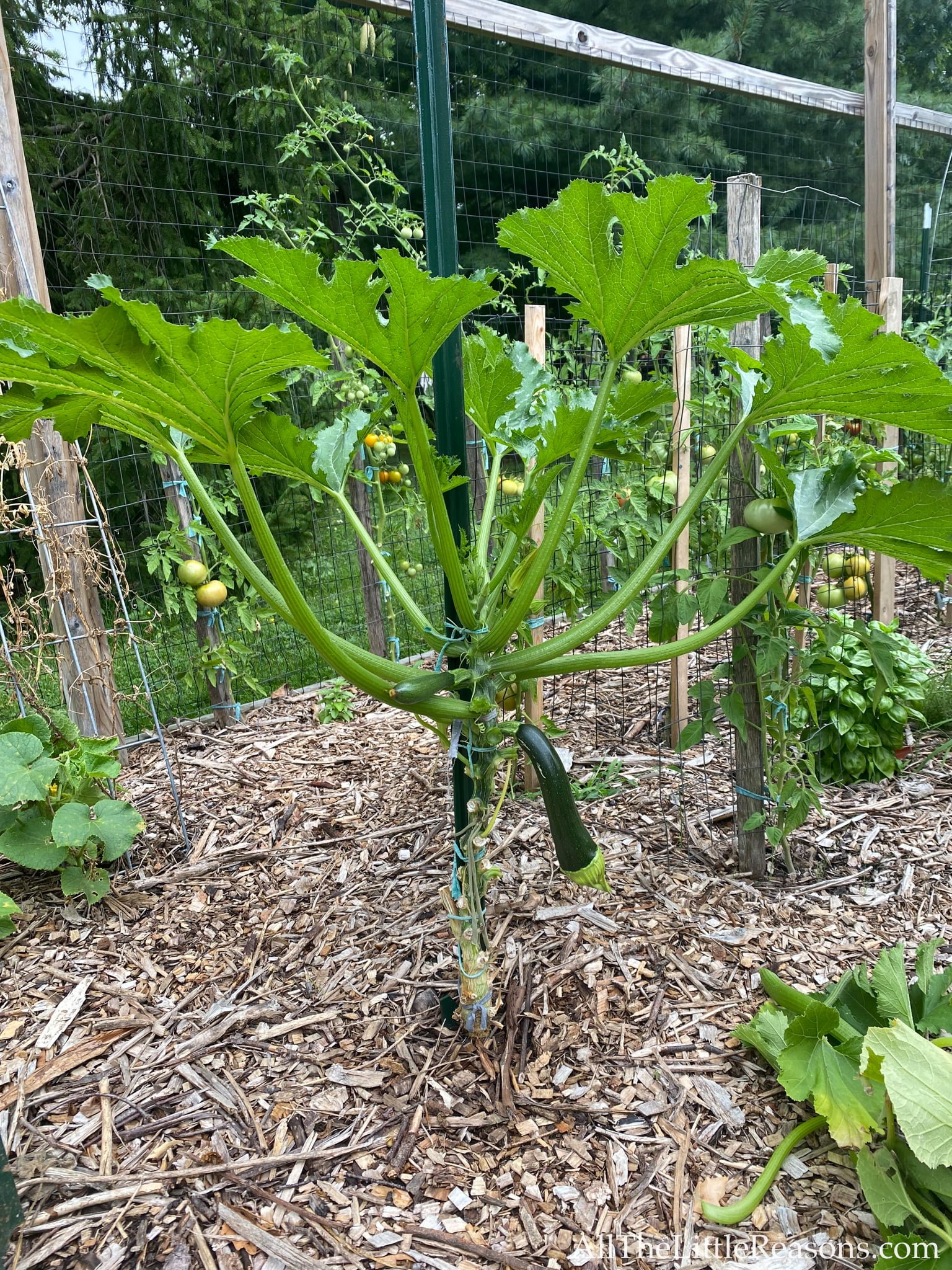
Implementing Vertical Spacing Techniques
Providing Adequate Headroom for Zucchini Plants
One aspect of vertical spacing is providing sufficient headroom for zucchini plants. As they grow, zucchini plants develop large leaves and long vines that need space to spread out without obstruction. Ensure that there is a minimum clearance of 6-8 feet above the ground to allow for the upward growth of the plants.
Utilizing Trellises and Cages
Using trellises and cages is an effective way to optimize vertical spacing and support zucchini plants. As the plants grow, the vines can be trained to climb the trellis or be guided through the openings of a cage. These structures not only provide support but also help contain the plants within the designated space, preventing them from sprawling excessively.
Vertical Spacing Benefits
Implementing vertical spacing techniques offers several benefits for zucchini plants. First, it maximizes the use of vertical space, allowing for better utilization of limited garden area. Second, it improves air circulation around the plants, reducing humidity and preventing the development of fungal diseases. Finally, by growing zucchini vertically, you can easily access the fruits for harvesting, resulting in a more efficient and enjoyable gardening experience.
Understanding Horizontal Spacing Requirements
Determining the Necessary Distance Between Plants
When considering horizontal spacing for zucchini plants, it is essential to determine the necessary distance between individual plants. Aim for a spacing of approximately 3-4 feet between each plant within a row. This distance allows the plants to expand comfortably without crowding each other and ensures optimal access for maintenance tasks.
Allowing Sufficient Room for Plant Growth
Proper horizontal spacing is crucial to provide sufficient room for zucchini plants to grow and develop fully. If the plants are too closely spaced, they can compete for resources, resulting in stunted growth, decreased yields, and an increased risk of disease. By allowing enough space between plants, you give each zucchini plant the opportunity to thrive and reach its maximum potential.
Avoiding Overcrowding
Overcrowding zucchini plants can lead to a host of problems, including restricted air circulation, increased pest and disease pressure, and poor fruit development. To avoid overcrowding, make sure to maintain the recommended distance between each plant. Adequate spacing not only prevents these issues but also facilitates easy access for necessary gardening tasks and reduces the need for excessive pruning.
Horizontal Spacing Techniques
To ensure proper horizontal spacing, you can use various techniques. One approach is to mark out the desired spacing using stakes or garden twine, creating a visual guide for planting. Another option is to use specialized spacer boards or planting frames that have pre-determined spacing notches. These tools can help maintain consistency and accuracy while planting zucchini in rows.
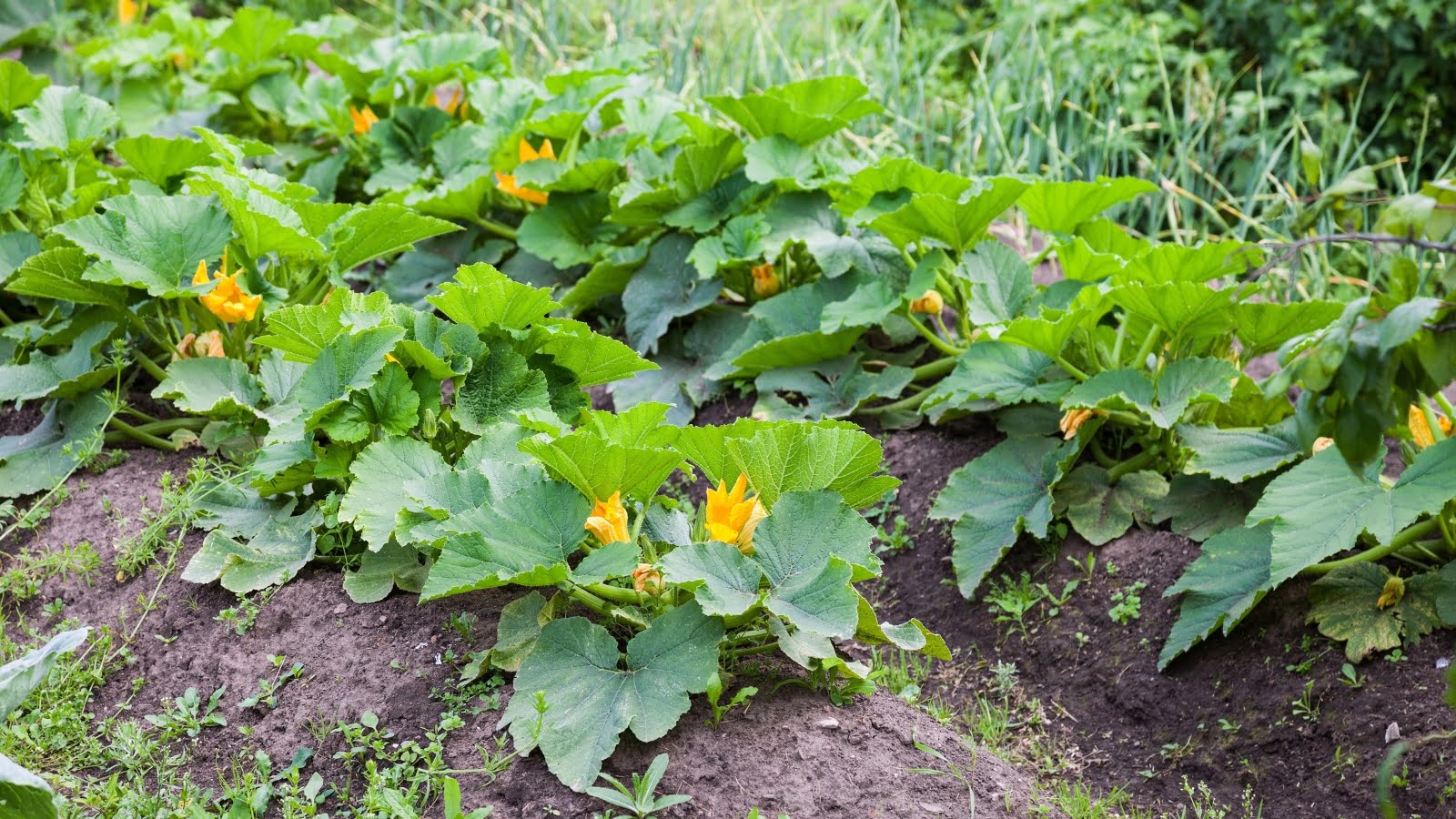
Intercropping and Companion Planting with Zucchini
Choosing Compatible Plants for Intercropping
Intercropping zucchini with compatible plants is an excellent way to maximize space and enhance garden productivity. Choose companion plants that have similar growth requirements and do not compete excessively with zucchini for nutrients or resources. Good choices for intercropping with zucchini include herbs like basil and dill, which can help deter pests, as well as flowers like marigolds and nasturtiums, which attract beneficial insects.
Benefits of Intercropping Zucchini
Intercropping zucchini provides several advantages. Firstly, it allows you to make the most of limited space by simultaneously growing multiple types of plants in close proximity. Secondly, intercropping can help deter pests and attract beneficial insects, promoting a healthier garden ecosystem and reducing the need for chemical interventions. It also improves the aesthetics of the garden, adding diversity and visual interest to your growing space.
Companion Plants for Zucchini
Choosing companion plants that are compatible with zucchini can further enhance its growth and overall health. Some suitable companion plants for zucchini include tomatoes, cucumbers, beans, and radishes. These plants can complement each other’s growth habits, repel pests, and maximize space utilization, creating a harmonious and productive garden environment.
Maintaining Proper Spacing During Zucchini Growth
Thinning Young Zucchini Seedlings
After germination, it is essential to thin out the zucchini seedlings to maintain proper spacing. Thinning involves removing excess seedlings, allowing the remaining plants to have enough room to grow. Thin the seedlings to one per planting spot, ensuring that the recommended spacing guidelines are followed. Thinning prevents overcrowding and ensures that each zucchini plant has ample space to develop and access essential resources.
Monitoring and Adjusting Plant Spacing as Needed
As your zucchini plants continue to grow, it is crucial to monitor their spacing and make necessary adjustments. Regularly inspect the plants to ensure they are not encroaching upon each other’s space. If any plants appear overcrowded or are obstructing airflow, consider transplanting or removing them to maintain proper spacing. Adjusting plant spacing throughout the growing season promotes healthier growth and minimizes the risk of disease and pest infestations.
Pruning Zucchini for Optimal Plant Spacing
Pruning zucchini plants can contribute to maintaining optimal spacing as they grow. Remove any excess foliage, especially from the center of the plant, to improve air circulation and reduce moisture buildup. Additionally, prune or pinch off lateral shoots that are growing outside the designated space to prevent overcrowding. Pruning also promotes fruit development by redirecting the plant’s energy to the most productive branches.
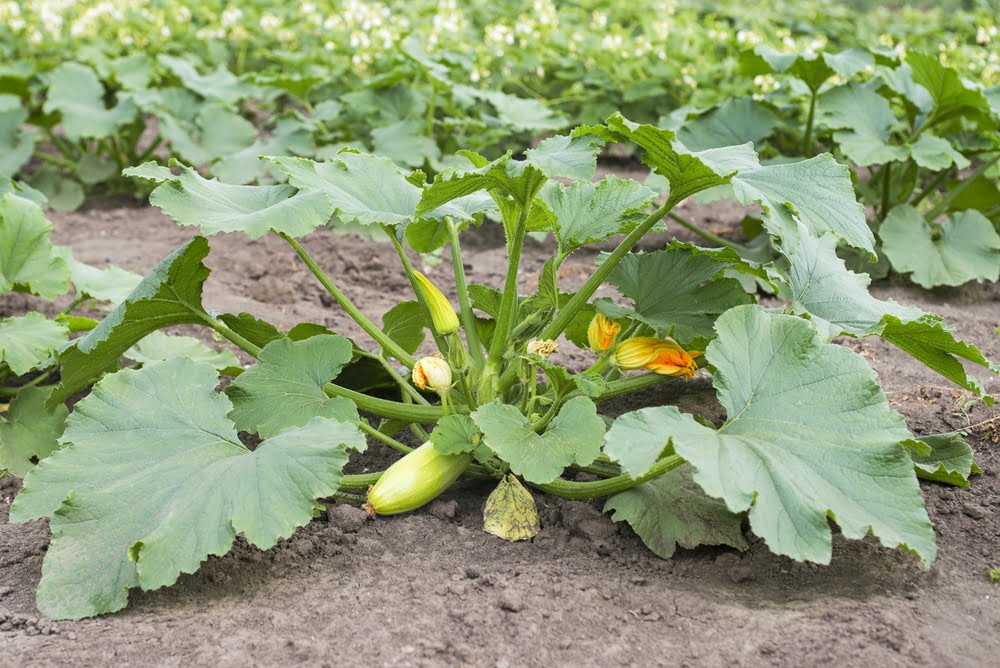
Potential Challenges and Troubleshooting
Identifying and Addressing Overcrowding Issues
If you notice that your zucchini plants are becoming overcrowded, it is crucial to address the issue promptly. Overcrowding can lead to poor plant health, decreased yields, and increased susceptibility to diseases. Consider removing or transplanting excess plants to maintain proper spacing. Additionally, ensure that companion plants or neighboring vegetation do not encroach upon the zucchini plants, hindering their growth and development.
Effects of Insufficient Spacing
Insufficient spacing between zucchini plants can have detrimental effects on their growth and productivity. Inadequate spacing restricts airflow, creating a favorable environment for diseases such as powdery mildew. It can also inhibit the penetration of sunlight, affecting photosynthesis and hindering fruit production. To prevent these issues, always adhere to the recommended spacing guidelines and adjust as necessary based on the specific growth habits of your zucchini plants.
Detecting Disease and Pest Problems
Proper spacing is crucial in reducing the risk of disease and pest problems in zucchini plants. Overcrowding and lack of airflow can create conditions conducive to fungal diseases, such as powdery mildew and gray mold. Additionally, overcrowded plants can attract pests and make it more difficult to identify and address infestations. Regularly inspect your plants for any signs of diseases or pests, such as yellowing leaves, wilting, or chewed foliage. Promptly address any issues to prevent further damage and maintain the health of your zucchini plants.
Harvesting and Post-Harvest Spacing Considerations
Spacing for Efficient Harvesting
Proper spacing not only promotes healthy growth but also facilitates efficient harvesting of zucchini. Adequate spacing allows for easy access to the fruits, enabling you to harvest them without damaging the plant or inadvertently disturbing nearby foliage. Well-spaced plants also ensure that the fruits have ample room to reach their full size and develop properly.
Maintaining Adequate Spacing for Post-Harvest Care
After harvesting, it is essential to maintain adequate spacing to provide post-harvest care for zucchini plants. Good airflow around the remaining plants helps prevent moisture buildup and reduces the likelihood of disease development. Clearing the area around the plants and maintaining the recommended spacing also allows for proper cleanup, fertilization, and pest control measures, ensuring the plants remain healthy for future harvests.
Storing and Preserving Zucchini
Once harvested, zucchini can be stored and preserved for later use. Proper spacing during storage is crucial to prevent the fruits from rotting or getting damaged. Place the zucchini in a cool, well-ventilated area with enough space between each fruit to allow for air circulation. Alternatively, you can also freeze or pickle zucchini to extend its shelf life and enjoy the freshly harvested flavors throughout the year.
By following these comprehensive guidelines on determining the right spacing for zucchini plants, preparing the soil, implementing vertical and horizontal spacing techniques, and understanding the benefits of intercropping, you can create the ideal growing environment for your zucchini. Maintaining proper spacing throughout the growth cycle, monitoring for potential challenges, and considering post-harvest spacing considerations will ensure the long-term success of your zucchini plants, resulting in a bountiful harvest of delicious and healthy zucchinis.
